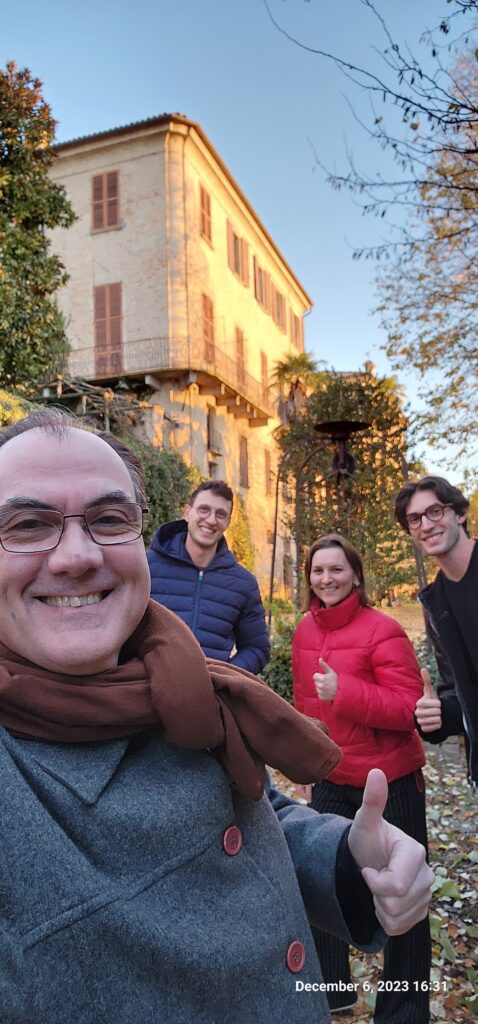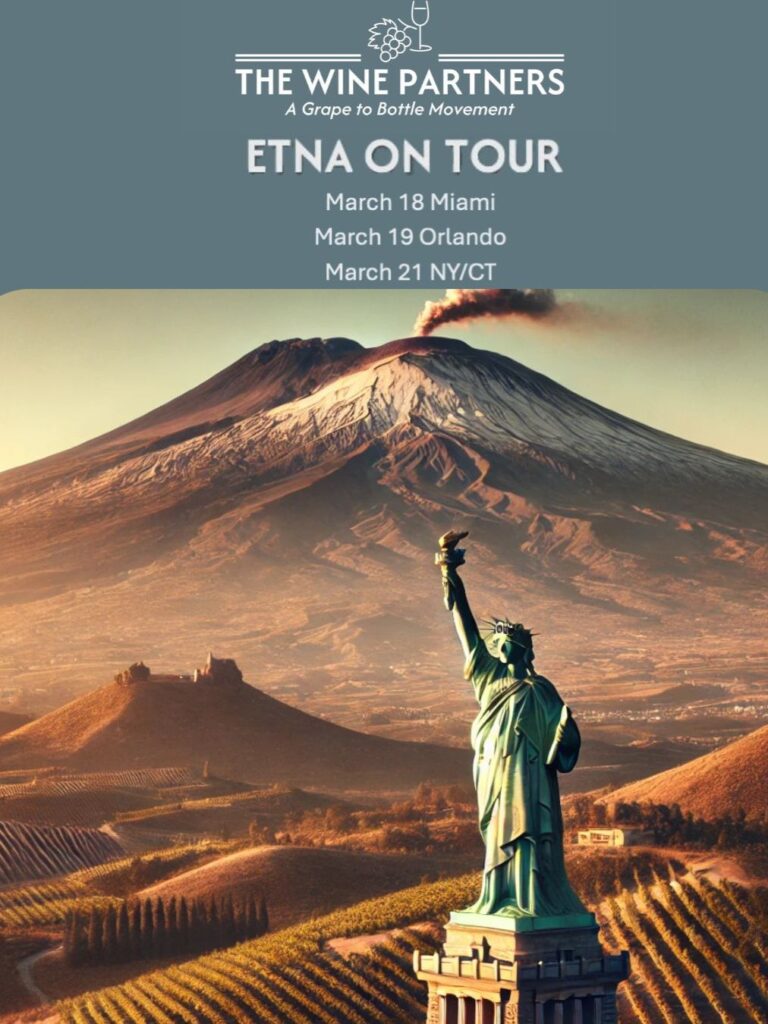Linguaglossa, Etna – North, Sicily, Nov 2024
I was one of the 20 IWAs selected by VIA for the November edition of the Gita Scolastica, a themed field trip focused (not only) on Etna. During six days of immersion, we tasted around 200 wines in ten masterclasses and eleven winery visits. The IWAs came from the USA, Canada, England, the Netherlands, South Africa, Kazakhstan, Hong Kong, Singapore, China, Japan, Mexico, and Brazil. Renowned journalists participated, such as Marco Sciarrini (Cronache di Gusto), Alicia Dorey (Le Figaro), and James Button (Decanter), along with the celebrated presence of Pietro Russo MW.
The Vinitaly International Academy (VIA) is the certification course of Vinitaly, known for its annual fair in Verona. VIA has set the gold standard for Italian wine certification, and in nearly ten years of the program, it has created an engaged community of 1,400 students, of whom 421 are certified Italian Wine Ambassadors (IWAs) from 50 countries—only nine of whom are Brazilian. VIA offers courses in various locations beyond Verona. Kazakhstan just hosted the latest edition of the course. Who knows, perhaps we will soon have a VIA edition in São Paulo.
Stevie Kim, Managing Partner of Vinitaly, aims to strengthen the Italian wine community beyond the fair, encouraging social media presence, the creation of educational content, events, and partnerships. The certification is constantly updated, reflecting the evolution of Italian wine and highlighting its more than 350 native grape varieties. While many wine-producing regions around the world are undergoing renewal, this is especially evident in Italy, where thousands of family wineries have brought surprising quality wines to the market using lesser-known indigenous grapes—aligning with new market trends.
I summarize here the major themes discussed during this Gita, as the wealth of content would not fit into just one article.
Contemporary Wines: Your Next Wine
A recurring theme was the impact of climate change and consumption trends. Pietro Russo MW highlighted the generational shift in consumption habits, with “Parker-style” wines (robust wines with excessive oak exposure) losing popularity among younger generations. Additionally, climate change presents further challenges in production, with extreme weather events becoming more frequent. Studies confirm that we are already 1.1°C above historical averages, affecting, for example, Pinot Noir and Chardonnay in Burgundy—grapes that produce some of the most beloved wines from the region. Some grape varieties are benefiting from these changes, such as Garnacha (which Spain has been working with extensively), Cinsault, and Gamay (in Jura and the Loire Valley in France).
Pietro, affirming that Italy is well-positioned to lead the movement toward contemporary wines, presented examples from Freisa (Piedmont), Frappato (Sicily), Schiava (Alto Adige), and Cannonau (the Sardinian name for Garnacha), along with Valpolicella (Veneto), Nebbiolo (Piedmont), and Sangiovese (Tuscany). All were vinified with less oak influence, minimal intervention, and greater authenticity of origin. The freshness of these contemporary wines is impressive.
Alicia Dorey led the most controversial masterclass. She explained that her fellow countrymen (the British) have been moving away from lower-quality wines and are unwilling to pay the prices that international buyers offer for Burgundy, Bordeaux, and Champagne. There has been strong price volatility in the art and luxury markets, including wines. The French have been seeking novelties, such as Crémants (sparkling wines made using the traditional method in France but outside Champagne), and have revived interest in Aligoté and Gamay wines.
We tasted several wines from the “New” Burgundy in a “contemporary” style, interestingly produced by foreign winemakers like the Japanese Seiichi Saito. She praised the Benedictine monks who created the terroir system—now copied worldwide—stating that “they knew what they were doing.” Unfortunately, the climate of that time no longer exists. It remains to be seen whether adaptation will be possible, as producers are finding it increasingly difficult to maintain traditional standards in these areas.
Coincidentally, I have found high-quality Italian “cousins” of classic-method wines in Etna, Alta Langa, and Oltrepò Pavese that are worth trying. #protip
Etna’s Unique Wines
Finally, throughout the Gita, among numerous other activities, we had the opportunity to explore several wines from Etna, some vinified from century-old pre-phylloxera vines—true gems. We learned that each Contrada (vineyard area) has its own characteristics (I already have my favorite, Santo Spirito), influenced by elevation, wind, geographic position, and soil—shaped by numerous lava flows over centuries, the most recent in the 1980s.
We explored various winemaking techniques, using different containers such as fiberglass, amphora, and cement, as well as the impact of Signora Etna’s seismic activity on wine aging, which requires additional precautions during vinification to prevent disruptions to the aging process.
From Nerello Mascalese, we tasted some very interesting sparkling wines and Rosatos, which, by the way, are my favorites for Brazil’s climate. Lastly, we assessed the aging potential of Etna’s white wines made from Carricante and Catarratto grapes through vertical tastings, including wines over ten years old.
Etna is one of those places that every wine lover should visit. I began this journey seeking to break away from routine, and in Italy, I have found enough material for years of fieldwork. This was my second trip to Etna just this year, and I am already planning the next one. It has been a great pleasure to discover these wines and the people who make this world thrive. I suggest you make some room in your wine cellar for these wonderful wines—you won’t regret it.
Mauricio de Chiaro (IWA) is a partner at b2us.co, a venture-building company, and co-founder of The Wine Partners, a club that connects engaged wine lovers with small producers. Mauricio traveled at the invitation of VIA.


